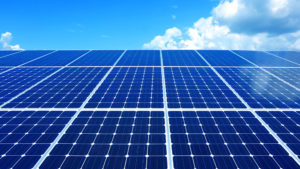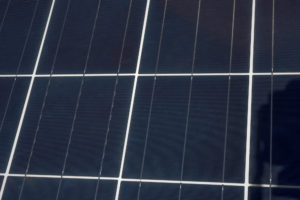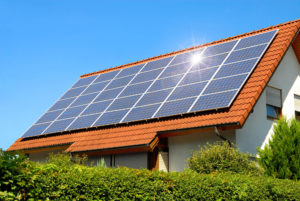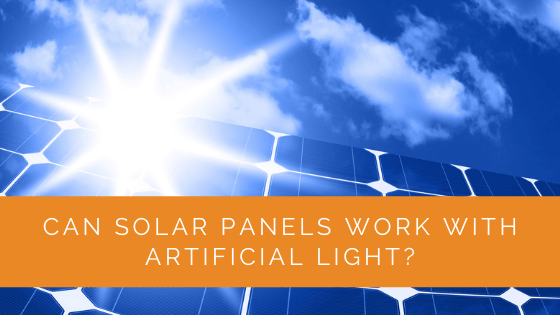Solar energy has tremendous potential. At this time, solar power is the best alternative to depleting non-renewable resources.
Hence, it is natural to feel curious about this brilliant source of energy. One such question in many curious minds is – ‘can we use artificial light to drive solar panels?’
Long story short, it IS possible for solar panels to generate electricity with artificial light. However, the results are still not very promising.
Natural sunlight is the best source to power up solar panels. Despite this fact, it is possible to use artificial light for specific applications.
Let us understand the science behind this potentially intriguing topic.
Contents
- 1 Key Takeaways
- 2 How Do Solar Panels Work?
- 3 Do Solar Panels Charge With Artificial Light?
- 4 Which Artificial Lights Can Work With Solar Panels?
- 5 What Are the Types of Artificial Lights?
- 6 What Are the Types of Solar Panels?
- 7 What Are the Results of Practical Tests?
- 8 Why Are Artificial Lights Less Effective Than Sunlight?
- 9 What Are Alternative Ways to Charge Solar Items?
- 10 What Are DSSCs?
- 11 Solar Panels With Artificial Light: Frequently Asked Questions
- 12 Expert Insights From Our Solar Panel Installers About Artificial Light and Solar Panels
- 13 Experience Solar Excellence with Us!
- 14 Final Thoughts
Key Takeaways
- Solar panels can generate electricity with artificial light, but the results are not as promising as with natural sunlight.
- Different types of artificial lights have varying spectra, impacting the amount of electricity produced by solar panels.
- Incandescent bulbs are among the better artificial light sources for charging solar panels, but the efficiency remains significantly lower than direct sunlight.
How Do Solar Panels Work?
Before moving on to the types of artificial lights, you should know the basics. In this section, we explain the working of solar panels in simple words.
Solar Energy: The Driving Force
The sun is a tremendous and only natural source of solar energy. It is a star made up of hydrogen and helium.
Now, the sun emits electromagnetic radiation. This emission is a result of nuclear fusion. The science nerds might recall their school classes here.
This radiation (which is simply known as solar radiation) reaches the earth. Consequently, we catch and store the solar radiation power to generate energy.

Solar Panels: The Capture Tools
Solar panels are primarily silicon-based cells. In simple terms, these panels absorb solar radiation.
Notably, solar radiation reaches the panels in the form of a light spectrum. The solar panels have a semiconductor system.
This system converts light energy into usable electricity. Subsequently, you can charge batteries or run bulbs with this energy.
Overall, the theory of energy conversion is the backbone of solar panels.
Do Solar Panels Charge With Artificial Light?
To understand the possibility of an artificial light source, consider the following:
- Replace ‘Sun’ with a ‘Bulb’
- Use the same science mentioned above
Similar to the sun, bulbs or artificial lights produce a light spectrum. This spectrum consists of:
- Infrared waves
- X Rays
- UV rays
- Light
Theoretically, solar panels absorb this spectrum similar to the sun’s incoming radiations. However, practically, this transference works in the case of artificial light too.
In addition, the source of artificial light proves crucial for the energy output. In simple words, the amount of electricity produced depends on the power of artificial light.
Which Artificial Lights Can Work With Solar Panels?
Different types of artificial lights have distinct spectrums. Thus, the amount of electricity output differs with varying ranges of wavelength.
How Does Artificial Light Work?
Generally, an artificial light consists of:
- A transparent glass exterior
- A filament or fiber in the interior
Consequently, when you heat this fiber, the resultant condition generates a light spectrum. In simple words, the light illuminates.
This illumination gives rise to a spectrum of radiation. Thus, a solar panel absorbs light from such an energy source.
What Are the Types of Artificial Lights?
Amongst several types of artificial lights, it’s better to concentrate on proven sources.
This chart depicts the essential types of artificial lights that work with solar panels.
| Type of Artificial Light | Technology Used |
| Incandescent Lamp | Tungsten Filament with inert gas |
| Fluorescent Light | Electrically charged gases |
| LED Light | Solid-state lighting |
| Metal Halide Lamp | High-pressure metal halides |
Thus, it is clear that specific technologies have an impact on the energy output. However, the overall working isn’t restricted to artificial lights alone.
The types of solar panels have an impact on energy generation too. Therefore, energy generation is a combination of compatible artificial lights and solar panels.
What Are the Types of Solar Panels?
There are three types of solar panels. You can differentiate them based on their manufacturing method, cost, and ease of installation.
Monocrystalline Solar Panels
These solar panels have cells with silicon wafers as the base material. Generally, manufacturers assemble these cells in a rectangular array.
Further, these cells hold together in a glass sheet. Notably, manufacturers use multiple sheets in some cases.
Finally, these solar panels stand firm in a rigid frame. You can identify this type of solar panel by its typical black color cells. However, the frame and back sheet can have different colors.
Polycrystalline Solar Panels
These solar panels consist of fragments of silicon crystals. These fragments are melted before undergoing the process of cutting.
Despite this fundamental difference, the construction method of polycrystalline panels is similar to that of Monocrystalline.
These solar panels are highly popular. You can identify them with their typical blue color solar panel cells.

Thin Film Solar Panels
The thin-film solar panels are made from different materials. Hence, these panels are further segregated as:
- Cadmium Telluride (CdTe) panels
- Copper Indium Gallium Selenide (CIGS) panels
- Amorphous Silicon panels
Moreover, thin-film solar panels have unique manufacturing methods depending on the above subtypes.
Aesthetically, these panels are thinner in appearance than the former types and are used in flexible solar panels. Also, they have low power capacity compared with the previous two types.
Generally, people install these solar panels in locations having a wide area. In addition, portability is another convenient benefit of thin-film solar panels.
What Are the Results of Practical Tests?
Ideally, the sun is the best source to work with solar panels. A clear sky can generate a significant amount of wattage through your solar panels.
Nevertheless, we are discussing the potential of artificial lights. So, practical tests prove that incandescent bulbs produce some energy with solar panels.
You can view the study published on Vernier. The experiment further states the low efficiency of LED lights.
Of course, it is logical to believe that LEDs generate less spectrum than incandescent or fluorescent lights.
In addition, a study from the Ghent University concludes the following:
- Best combination: Incandescent lights with Monocrystalline solar panels
- Second best: Incandescent lights with Polycrystalline solar panels
- Third best: Incandescent lights with CIGS solar panels
- Inefficient: Fluorescent, LED, and metal halides
Overall, if you want to use solar panels with artificial light, incandescent bulbs make a better option.
However, artificial lights can generate power of less than 30 W/m2. On the contrary, solar panels with the sun’s energy generate power of approx. 1000 W/m2.
Why Are Artificial Lights Less Effective Than Sunlight?
The practical tests prove a possible yet marginal solar power output through artificial lights. But, what are the reasons for this inefficiency? Let us find out in this section.
Barriers
Artificial light sources have a glass covering. This external covering acts as a barrier to light. Hence, despite a decent spectrum, the light gets absorbed in the glass.
This absorption causes a loss of energy. Eventually, the solar panels receive less amount of power from artificial light sources.
In addition, light from artificial sources spreads in the surrounding room. Thus, the concentration of spectrum reduces drastically.
Modern Technology
Newer lights consume less electricity. Thereupon, they emit a low power spectrum. This weak wavelength does not charge solar panel cells.
Hence, the overall efficiency of solar panels reduces. It is essential to realize that artificial lights aren’t capable substitutes for sunlight.
So, modern technology aims at different applications. Moreover, people use artificial lights for illumination rather than charging solar panels.
Weak Spectral Irradiance
The intensity of light emission of the sun is strikingly powerful. In contrast, artificial lights like LEDs or fluorescent bulbs have frail spectral intensity.
Hence, such sources are inefficient to power solar panel cells. The low spectral irradiance generates less energy to store for conversion.
So, solar panels can generate electricity. Still, the output remains low compared with direct sunlight.
What Are Alternative Ways to Charge Solar Items?
These days, you can find many applications running on solar energy. However, there are times when you face practical difficulties.
The most common challenges with solar products are:
- Lack of sunlight
- Weak artificial light source
- Overcast skies
- Cold regions
Your solar-operated products can take a hit due to the above reasons. Still, there are ways to charge such products.
Plug Into the Power Outlet
Some solar-oriented products have dual charging systems. You can charge them under sunlight or artificial light.
However, under zero light conditions, you can use the standard electricity charging option. For instance, you can find generic charging pins on some gadgets.
In addition, some solar power-driven gadgets have a USB port such portable solar generators, portable solar power banks and portable solar chargers. So, you can simply use a suitable cable and charge as per convenience.
Use Optics and Windows
This method falls under the category of indoor charging.
Let us consider that you have a solar panel. This panel charges your solar items like a battery or flashlight. The power requirements of such products are pretty low.
In such a scenario, you can use windows to magnify the weak sunlight.
All you need to do is place the solar panel strategically under a window. Due to the glass effect, the sunlight focuses on the photovoltaic cell.
Thus, although requiring sunlight, this method is a good alternative for solar charging.

What Are DSSCs?
Since we are discussing the possibility of solar panel charging in low light conditions, DSSC comes into the picture.
DSSC is an abbreviation for dye-sensitized solar cells. These solar cells work better than the standard semiconductors in low light.
Also, DSSCs are more affordable. Importantly, these solar cells work differently than regular solar panel cells. They provide high efficiency to low-intensity lights.
Hence, this property makes DSSC efficient in using artificial light of low intensity. Still, ongoing research will make DSSC a viable option to standard solar cells soon.
Solar Panels With Artificial Light: Frequently Asked Questions
Despite the limitations of using artificial light for solar panels, this topic has several queries. Let us read some of the FAQs in this domain.
Do Solar Panels Work only With Sunlight?
Solar panels are the most efficient under intense sunlight. However, you can observe the production of electricity in winters. Thus, solar panels need a sufficient amount of light for producing electricity.
A proper storage system can store an excess amount of energy. So, solar panels work on a combination of light and storage systems.
Do Solar Panels Generate Electricity in The Rain?
During the rainy season, the efficiency of solar panels decreases marginally. This decrease happens due to clouds covering the sun.
Despite this fact, water from rain can clean the solar panels. Hence, there is a compensation in power efficiency. You can observe the removal of dust and dirt during rains.
Will an Led Flashlight Charge a Solar Panel?
An LED flashlight can charge a solar panel. Still, you will need over 10 hours to work with a solar panel by this method.
Generally, LEDs have a low light spectrum. Hence, you should use this method in the absence of any indoor lighting option. It is best to use a storage system in the case of solar power units.
Do Solar Panels Work After a Power Outage?
Solar panels generate electricity to keep a solar battery charged up. After a power outage, you can run the household appliances with this battery.
Hence, solar panels are a component of the solar power system. You need a reliable battery and storage system to avail all the benefits. It is a good idea to contact professional solar energy experts before installation.
Do Mirrors Increase Solar Panel Output?
Increasing solar panel output through mirrors depends on:
- Season
- Type of installation
- Reflector
When combined, mirrors can increase the power output by a whopping 25%. Still, mirror reflectors include additional costs for setup.
Expert Insights From Our Solar Panel Installers About Artificial Light and Solar Panels
While it’s true that solar panels can generate electricity from artificial light, the efficiency is nowhere near what you get with natural sunlight. Incandescent bulbs are somewhat effective, but they’re not a practical long-term solution.
Senior Solar Installer
Artificial light sources like LEDs and fluorescent bulbs don’t have the necessary spectral intensity to efficiently charge solar panels. For now, natural sunlight remains the best option for maximizing solar panel output.
Lead Solar Technician
Using mirrors to reflect artificial light onto solar panels can help increase output slightly, but this method is still far less effective than direct sunlight. It’s an interesting experiment, but not a replacement for natural solar energy.
Chief Installation Engineer
Experience Solar Excellence with Us!
Trust in Solar Panels Network USA, where our seasoned experts deliver top-quality solar solutions for homes and businesses nationwide. With a legacy of countless successful installations and a commitment to sustainable energy, we’re your reliable partner in the solar journey. Ready for a brighter, eco-friendly future? Call us now at (855) 427-0058 and harness the power of the sun!
Final Thoughts
Artificial light sources like incandescent bulbs work well with solar panels. But, their power output is significantly less than that of natural sunlight.
So, the best way to get maximum solar panel efficiency is proper sunlight. You can use artificial light for minor applications. This option can prove handy in extreme winters and insufficient sunlight.
In the future, with more efficient solar cells like DSSC, we can expect better usage of artificial light. However, it’s unlikely for any artificial source to produce similar power as that of sunlight.
Overall, solar panels work best under intense sunlight. Still, you can experiment using artificial light for running less demanding items.
About the Author
Solar Panels Network USA stands at the forefront of solar energy solutions, driven by a team of seasoned solar engineers and energy consultants. With over decades of experience in delivering high-quality solar installations and maintenance, we are committed to promoting sustainable energy through customer-centric, tailored solutions. Our articles reflect this commitment, crafted collaboratively by experts to provide accurate, up-to-date insights into solar technology, ensuring our readers are well-informed and empowered in their solar energy decisions.

